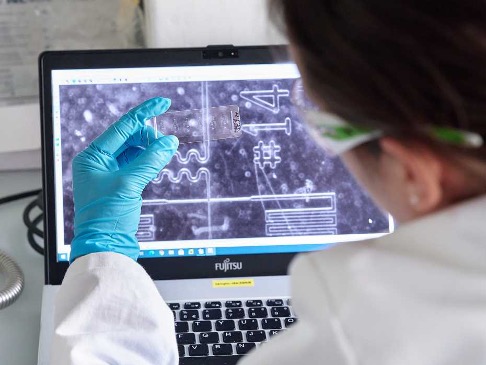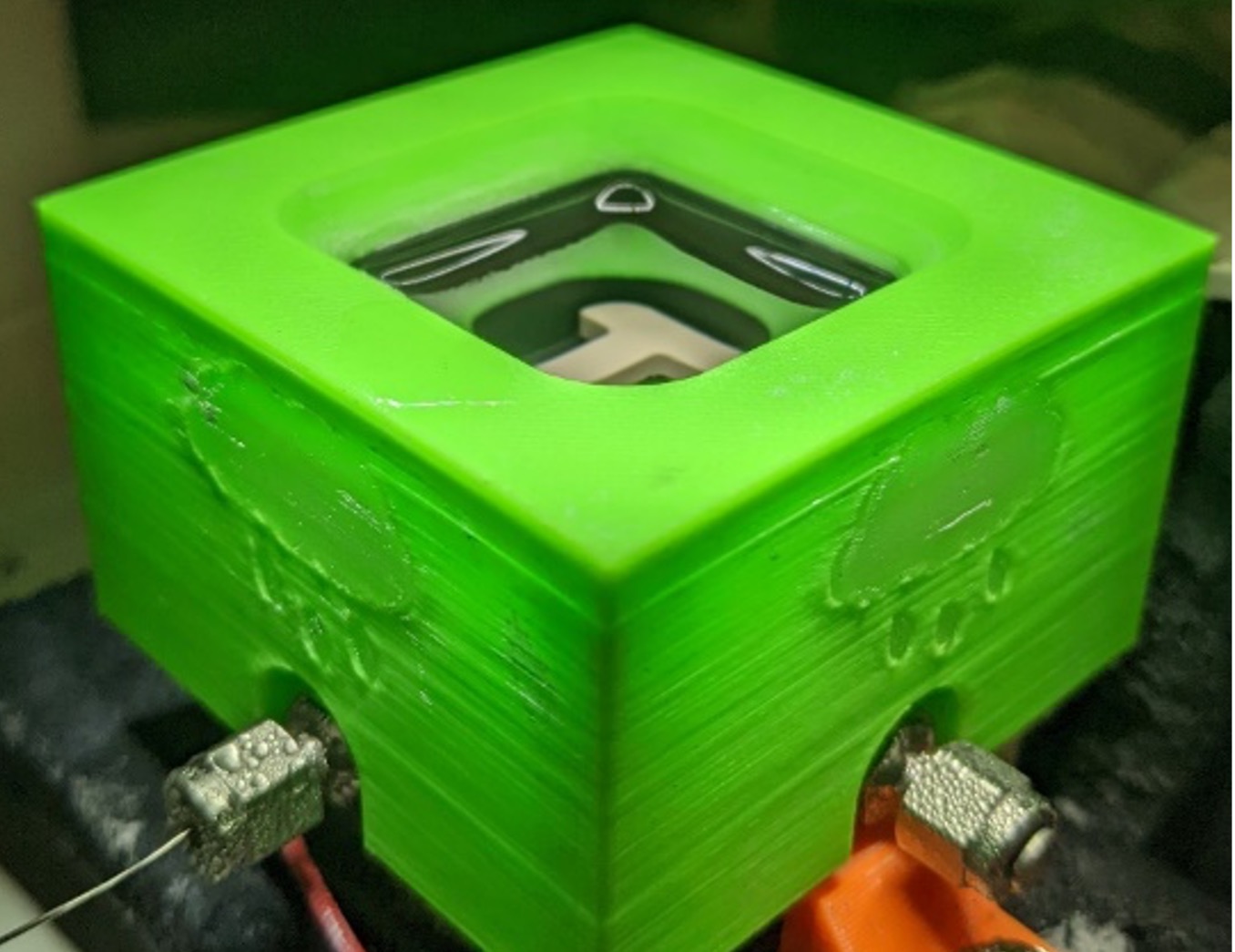MINCZ

The Microfluidic Ice Nuclei Counter Zürich (MINCZ, external pageIsenrich and Shardt et al., 2022call_made) is used to investigate the nucleation of ice in droplets of very small volumes (100s of pL). At these volumes, the homogeneous freezing of pure water occurs at low temperatures (−36 °C), and it becomes possible to detect ice-nucleating particles in samples that are active at temperatures slightly above −36 °C up to 0 °C.
We developed the microfluidic device in collaboration with the deMello group at ETH to generate droplets from an aqueous sample. After they are generated, these droplets are stored in fluoropolymer tubing, placed in an ethanol bath, and cooled at a controlled rate using a Peltier device. Full details of the experimental setup and validation can be found in external pageIsenrich and Shardt et al., 2022call_made. Currently, work is being carried out to systematically investigate the heterogeneous nucleation behaviour of various ice-nucleating particles. Our aim is to better constrain the parameterizations that are used to describe ice formation in the atmosphere when we predict weather and project climate.

References
Isenrich F N, Shardt N, Rösch M, et al. The Microfluidic Ice Nuclei Counter Zürich (MINCZ): A platform for homogeneous and heterogeneous ice nucleation[J]. Atmospheric Measurement Techniques Discussions, 2022: 1-24. external pagehttps://doi.org/10.5194/amt-2022-153call_made
